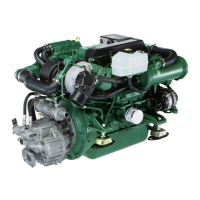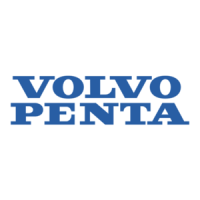15
General information about classification
The classification procedures outlined below are gen-
eral and can be changed from time to time by the
Classification Societies.
The classification procedure was originated for the
purpose of introducing similar and comparable rules
and regulations for, among other things, production
and maintenance of ships and their machinery and
equipment. As a result of these rules and regulations
“safety at sea” could be improved and better docu-
mentation could be introduced for insurance matters.
The government authorities in most countries con-
cerned with shipping have authorized the Classifica-
tion Societies to handle these rules and make sure
they are followed. The classification procedure is
dates from long ago. It can be noted that Lloyd’s Reg-
ister of Shipping, London, was founded as early as
1760.
The major Classification Societies are:
Det norske Veritas (DnV)
Lloyd’s Register of Shipping (LR)
Bureau Veritas (BV)
American Bureau of Shipping (ABS)
Germanischer Lloyd (GL)
Registro Italiano Navale (RINA)
Russian Maritime Register of Shipping,
(RMRS)
China Classification Society (ZC)
Korean Register of Shipping (KR)
Nippon Kaiji Kyokai (NK)
As examples of government authorities responsible
for ship’s seaworthiness we can note the following:
Sjöfartsverket, Sweden (National Maritime Administra-
tion), Sjöfartsdirektoratet, Norway, Statens Skibtilsyn,
Danmark, Department of Transport, England.
The Classification Societies have established their
rules so that the authorities’ requirements are cov-
ered. The authorities, however, have requirements for
lifeboats that are not included in the rules of the Clas-
sification Society.
In 1974 an International Convention for the Safety of
life at sea (SOLAS) was adopted by the International
Maritime Organisation (IMO). This document ratifies
uniform rules for life saving equipment on board on
lifeboats and rescue boats.
NOTE! This installation manual does not give full in-
formation concerning classification. Please contact an
authorised classification society for complete informa-
tion.
Classified engine, range of use
An engine with equipment that is used in a classified
vessel must be approved by the Classification Soci-
ety, which handles matters relating to ships’ seawor-
thiness. The rules apply for instance to the propulsion
engine, auxiliary engine, power take off, reverse gear,
shaft and propeller.
This means that if an installation needs to be classi-
fied it must be stated clearly when addressing inquir-
ies and quotation requests to AB Volvo Penta.
Special rules for different operational
conditions
The Classification Societies have, in general, different
rules relating to the following:
Varying shipping conditions e.g.:
Shipping in tropical water
Coastal shipping
Ocean shipping
Operation in ice (several different classes)
Type of load e.g.:
Passenger shipping
Tanker shipping
Freezer shipping
Type of manning e.g.:
Unmanned machine room
Manned machine room
These rules are adapted so that each vessel can be
assumed to function faultlessly in the area or type of
operation for which it is approved.

